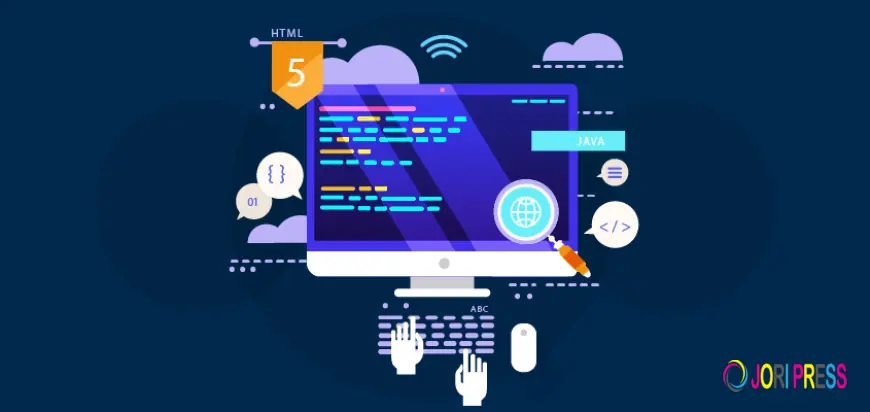The Ultimate Guide to Modern Web Development
Explore The Ultimate Guide to Modern Web Development to learn the latest technologies, strategies, and best practices for creating fast, secure, and user-friendly websites that drive business growth.

The web has evolved into a dynamic, intelligent ecosystem. Modern web development is no longer about static pages it’s about immersive, responsive, and intuitive digital experiences. Businesses thrive when their online presence mirrors innovation and user convenience.
Understanding Modern Web Development
The Evolution of Web Technologies
From the early days of HTML-based pages to today’s AI-driven websites, the web has undergone a monumental transformation. The introduction of JavaScript frameworks, cloud integration, and responsive design has redefined how we build and experience websites.
Why Modern Web Development Matters Today
Modern users expect speed, security, and interactivity. A slow or outdated website can diminish credibility instantly. In today’s competitive landscape, businesses must adopt contemporary web practices to attract, retain, and convert their audience.
Core Elements of Modern Web Development
Front-End Development: Crafting User Interfaces
Front-end development focuses on the visual and interactive layer. It blends creativity and logic to ensure smooth user interaction. HTML structures content, CSS enhances aesthetics, and JavaScript adds life to interfaces through animations and dynamic content.
Back-End Development: Powering Functionality
The back-end operates behind the scenes. It manages data, server logic, and application processes. Technologies like Python, PHP, and Node.js empower developers to create efficient, scalable systems that ensure seamless functionality.
Full-Stack Development: Bridging Design and Logic
Full-stack developers master both client and server sides. Their holistic approach ensures consistency between design and performance. In modern teams, full-stack expertise enhances collaboration and speeds up deployment.
Essential Technologies and Frameworks
HTML5, CSS3, and JavaScript: The Foundation
These three pillars form the bedrock of modern web development. HTML5 structures information, CSS3 delivers styling precision, and JavaScript orchestrates interactivity—together enabling innovation in design and usability.
Popular Frameworks: React, Angular, and Vue.js
Frameworks accelerate development. React offers component-based architecture, Angular provides enterprise-grade control, and Vue.js delivers simplicity and flexibility. Choosing the right one depends on project scope and scalability needs.
Server-Side Tools: Node.js, Django, and Laravel
Server-side technologies drive performance. Node.js excels in real-time applications, Django emphasizes security and speed, while Laravel offers elegance and readability. These tools empower developers to build robust digital backbones.
Responsive and Mobile-First Design
Creating Seamless Experiences Across Devices
Modern users browse across multiple screens. Responsive design ensures content adapts effortlessly to different resolutions. Flexbox, grid systems, and media queries play key roles in maintaining consistency and accessibility.
The Role of Progressive Web Apps (PWAs)
PWAs combine the best of web and mobile experiences. They load fast, work offline, and provide app-like engagement. Businesses adopt PWAs to increase user retention while reducing development costs.
Performance Optimization and Speed
Why Speed Defines Success
Milliseconds matter. A website’s performance directly impacts user satisfaction, bounce rates, and search rankings. Users expect instant access—and slow-loading pages risk immediate abandonment.
Techniques to Accelerate Web Performance
Optimizing images, leveraging caching, and minimizing code bloat are vital. Implementing lazy loading and using Content Delivery Networks (CDNs) significantly enhances load times, ensuring a fluid experience.
Security and Data Protection
Common Security Threats in Web Development
Modern websites face risks like SQL injection, cross-site scripting (XSS), and data breaches. Awareness of vulnerabilities is the first step toward prevention.
Implementing SSL, Authentication, and Safe APIs
SSL encryption protects user data, while multi-factor authentication strengthens security layers. Developers must also ensure APIs are safeguarded through tokens and permissions to prevent unauthorized access.
SEO and Accessibility Integration
Building for Visibility and Inclusivity
A great website is discoverable and inclusive. Integrating SEO and accessibility ensures search engines and users regardless of ability can navigate content effortlessly.
Technical SEO Best Practices for Developers
Clean URLs, fast load times, schema markup, and mobile optimization boost ranking potential. Developers should align SEO principles with code efficiency to achieve optimal performance.
The Future of Web Development
AI, Automation, and the No-Code Revolution
Artificial intelligence is streamlining coding processes through automated design systems. No-code platforms empower non-developers to build professional-grade websites, democratizing web creation.
Web3 and Decentralized Applications
Web3 marks a paradigm shift. It focuses on blockchain-based solutions, decentralization, and enhanced user privacy. The next digital era will prioritize transparency and user empowerment.
Conclusion
Modern web development is a blend of creativity, logic, and innovation. Businesses that embrace these evolving technologies gain a competitive edge. The future of the web belongs to those who build not just for devices but for people, experiences, and lasting impact.
What's Your Reaction?
 Like
0
Like
0
 Dislike
0
Dislike
0
 Love
0
Love
0
 Funny
0
Funny
0
 Angry
0
Angry
0
 Sad
0
Sad
0
 Wow
0
Wow
0







![Introduction ?98~[(2121)]?~[{0875}] to the stock market course](https://joripress.com/uploads/images/202509/image_430x256_68bfbfdebfba4.webp)








































